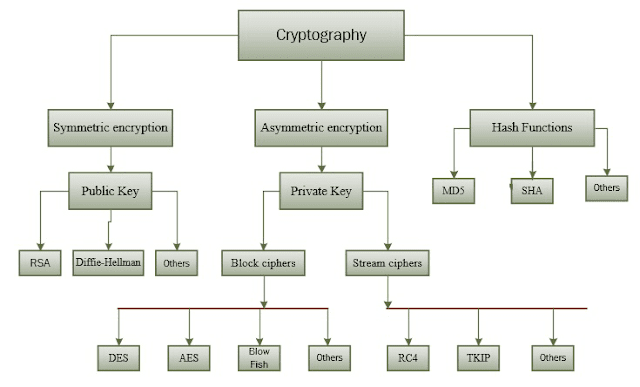Android and Encryption
What is Encryptions?
Encryption is the method by which plaintext or any other type of data is converted from a readable form to an encoded version that can only be decoded by another entity if they have access to a decryption key.Benefits of encryption
The primary purpose of encryption is to protect the confidentiality of digital data stored on computer systems or transmitted via the internet or any other computer network. A number of organizations and standards bodies either recommend or require sensitive data to be encrypted in order to prevent unauthorized third parties or threat actors from accessing the data.
Modern encryption algorithms also play a vital role in the security assurance of IT systems and communications as they can provide not only confidentiality but also the following key elements of security:
- Authentication: the origin of a message can be verified.
- Integrity: proof that the contents of a message have not been changed since it was sent.
- Nonrepudiation: the sender of a message cannot deny sending the message.
How encryption works?
Unencrypted data, often referred to as plaintext, is encrypted using an encryption algorithm and an encryption key. This process generates ciphertext that can only be viewed in its original form if decrypted with the correct key. Decryption is simply the inverse of encryption, following the same steps but reversing the order in which the keys are applied. Today's most widely used encryption algorithms fall into two categories: symmetric and asymmetric.
symmetric
symmetric
Symmetric-key ciphers, also referred to as "secret key," use a single key, sometimes referred to as a shared secret because the system doing the encryption must share it with any entity it intends to be able to decrypt the encrypted data. The most widely used symmetric-key cipher is the Advanced Encryption Standard (AES).
The main disadvantage of the symmetric key encryption is that all parties involved have to exchange the key used to encrypt the data before they can decrypt it.
how encrypt using Symmetric?
It uses a secret key that can either be a number, a word or a string of random letters. It is blended with the plain text of a message to change the content in a particular way. The sender and the recipient should know the secret key that is used to encrypt and decrypt all the messages. AES, RC4, DES, RC5, and RC6 are examples of symmetric encryption. The most widely used symmetric algorithm is AES-128, AES-192, and AES-256.The main disadvantage of the symmetric key encryption is that all parties involved have to exchange the key used to encrypt the data before they can decrypt it.
Asymmetric
Asymmetric cryptography, also known as public key cryptography, uses two different but mathematically linked keys, one public and one private. The public key can be shared with everyone, whereas the private key must be kept secret. The RSA encryption algorithm is the most widely used public key algorithm, partly because both the public and the private keys can encrypt a message; the opposite key from the one used to encrypt a message is used to decrypt it. This attribute provides a method of assuring not only confidentiality but also the integrity, authenticity, and non-reputability of electronic communications and data at rest through the use of digital signatures.how encrypt using ASymmetric?
To use asymmetric encryption, there must be a way of discovering public keys. One typical technique is using digital certificates in a client-server model of communication. A certificate is a package of information that identifies a user and a server. It contains information such as an organization’s name, the organization that issued the certificate, the users’ email address and country, and users public key.
When a server and a client require secure encrypted communication, they send a query over the network to the other party, which sends back a copy of the certificate. The other party’s public key can be extracted from the certificate. A certificate can also be used to uniquely identify the holder.
Difference Between Symmetric and Asymmetric Encryption
- Symmetric encryption uses a single key that needs to be shared among the people who need to receive the message while asymmetrical encryption uses a pair of a public key and a private key to encrypt and decrypt messages when communicating.
- Symmetric encryption is an old technique while asymmetric encryption is relatively new.
- Asymmetric encryption was introduced to complement the inherent problem of the need to share the key in symmetrical encryption model, eliminating the need to share the key by using a pair of public-private keys.
- Asymmetric encryption takes relatively more time than the symmetric encryption.
if you want to see applying of Symmetric and ASymmetric Encryptions in Android go here.





تعليقات
إرسال تعليق